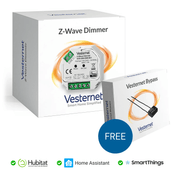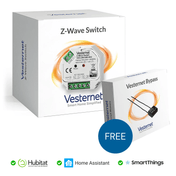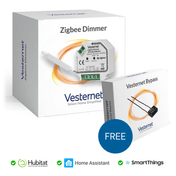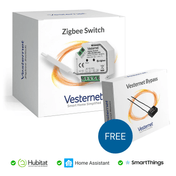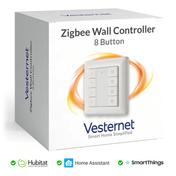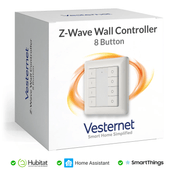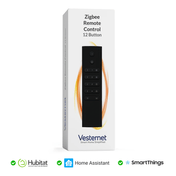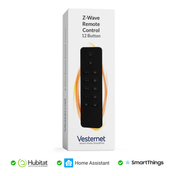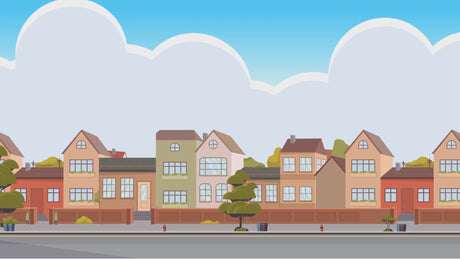
One of the most confusing tasks when setting up a Smart Home can be determining which devices work together.
Depending on which products are being compared, this question can be answered in several different ways. It may be that the devices are Compatible with each other at a protocol level, or that they are Interoperable with each other via some other method.
The words Compatible and Interoperable often get misunderstood or used incorrectly - they may sound like they mean the same thing, but there are some subtle differences.
This guide will help you to understand what each of these terms mean and how to navigate your way through this part of your Smart Home journey.
Compatible or Interoperable
Compatible
Products that are Compatible are usually products that use the same base technology and should work directly with each other.
Examples of Compatible products are Aeotec devices working with TKB devices because they are using the Z-Wave protocol, Philips Hue bulbs working with Innr bulbs because they are using the Zigbee protocol and the Ring Alarm System working with the Ring Doorbell, Ring Cameras and Ring Spotlights because they all speak the same protocol over WiFi.
Interoperable
Some products can work with products from another, different, technology - these products are Interoperable with each other.
These types of products do not work directly with each other at a protocol level, but usually using another local controller (hub, bridge or gateway) via your WiFi / Ethernet Network or using a "Cloud" service via the Internet.
Sometimes products will use their own proprietary protocol to communicate together (and hence are compatible with each other directly), but then also offer a further "open" communication protocol for interoperability, for example MQTT, UPnP or DLNA.
Examples of Interoperable products would be Nest working with a Z-Wave system via their Cloud service, Philips Hue working with a Z-Wave system via the local Philips Hue Bridge API and a Fibaro Home Center 3 Lite Controller being integrated into a security system using UPnP.
Smart Home Technologies
Now that we understand the differences between compatibility and interoperability, let's see how this applies to some of the common Home Automation Technologies.
Z-Wave
Z-Wave is a wireless communication technology that uses reliable, low-power radio waves that easily travel through walls, floors and furniture, meaning you don't have to rip-up carpets and floors to add new wiring.
Features such as two-way communication, status updates and mesh networking combine together to ensure reliability and resiliency in your Smart Home system - no more wondering whether the light in your garage really turned off when you closed the door!
Z-Wave Plus improves on the original version by offering increased range, improved battery life and self-healing capabilities to keep the mesh network in optimal condition.
Z-Wave Plus S2 and Smart Start are extensions to the Z-Wave Plus framework and offer higher security levels and simpler Inclusion of devices.
Recently Z-Wave Plus V2, also known as 700 Series or Gen7, has been released and this builds on the work that began with Z-Wave Plus and the incremental improvements of S2 and SmartStart. From the firmware to the chips themselves, Gen7 brings massive increases in wireless range, vastly superior security, faster operation and all while decreasing power consumption yet again.
The majority of Z-Wave devices should work within the well-established Z-Wave Controllers out-of-the-box - the protocol is designed to be backwards compatibile accross versions and uses standard "Command Classes" to define features and functionality. Sometimes, especially with newly released devices, there may be limited functionality until specific support for a device is added to the Z-Wave Controller. This usually occurs quite quickly in the form of regular software updates from the Z-Wave Controller manufacturer.
There is one area to bear in mind with Z-Wave - the RF frequency ranges used are different in each territory due to regulatory requirements in the sub-1GHz band. In Europe Z-Wave devices all use the 868.42MHz frequency and this is the type of devices that Vesternet sells. These will not work with Z-Wave devices or Z-Wave Controllers that use different frequencies! For further information see the Silicon Labs reference.
Z-Wave devices fall into the Compatibile category.
ZigBee
ZigBee is an open standard for a low-cost, low-power, wireless mesh network targeted at the wide development of devices for wireless control and monitoring applications. It's backed by some of the worlds biggest companies, including Philips, Nest, Samsung, Texas, Siemens & Whirlpool.
With Zigbee based devices you get a robust, resilient and self-managing system. Zigbee devices are often much simpler than their Z-Wave counterparts, prefering to focus on specific tasks such as motion sensing or dimming a light, rather than trying to combine lots of different functionality into one device.
Simplicitly therefore makes compatibility much easier with Zigbee. Broadly speaking there are two Zigbee profiles in use - Zigbee Light Link (ZLL) and Zigbee Home Automation (ZHA). Devices within each profile should work together out-of-the-box and, as long as your Zigbee Controller supports a specific profile, devices from that profile should work within it.
There's also an emerging standard called Zigbee 3.0 which merges both the ZLL and ZHA profiles, combining the strengths of each into one new standard. In most cases Zigbee 3.0 devices are backwards compatible with Zigbee Controllers that only support ZLL or ZHA.
Unlike Z-Wave, Zigbee uses a single frequency globally - the 2.4GHz band (the same as 2.4GHz WiFi). This means that you can use devices from around the world in your Zigbee network without having to worry about picking the correct frequency! For further information see the Silicon Labs reference.
Zigbee devices also fall into the Compatibile category.
Thread
Thread is a networking protocol built on open standards, designed for low-power wireless mesh networks. Existing popular application protocols and IoT platforms can run over Thread networks, solving the complexities of interoperability, range, security, energy and reliability.
Thread devices seamlessly integrate with larger IP networks and don’t need proprietary gateways or translators. This reduces infrastructure investment and complexity, removes potential points of failure and reduces maintenance burdens. Thread also securely connects devices to the cloud, making it easier to control IoT products and systems from devices such as mobile phones and tablets.
Thread is seen as a natural evolution for many Home Automation products based on the ZigBee protocol and will allow devices from different vendors to interoperate, something that hasn't been possible previously.
Being based on existing technologies in all its layers: from routing, packeting, and security to its wireless radio technology, Thread is an open standard that is not tied to a specific manufacturer, which minimizes the risk of incompatibilities. It leverages proven technologies to ensure seamless integration with existing infrastructure and is not restricted to one particular set of applications or usage protocols. Thread uses IEEE 802.15.4 radio technology on the 2.4 GHz spectrum, which can be deployed worldwide.
Thread devices also fall into the Compatibile category.
WiFi / Ethernet Network
WiFi and Ethernet (wired) Networks have spread widely in the past decade, you can "get connected" almost anywhere nowadays - at home, at work, in libraries, schools, airports, restaurants, hotels and even on-the-move in certain types of public transport.
The ubiquitous nature of WiFi and Ethernet make them an ideal technology for Smart Home devices and many devices are now featuring WiFi and Ethernet connectivity as vendors recognise that they can take advantage of your existing home Network. The chances are that you already have good Network coverage throughout your home using a mixture of WiFi and Ethernet, so it makes sense to use this Network, rather than you having to implement something else.
Broadly speaking, WiFi and Ethernet devices will use vendor specific communication protocols which means that compatibility is determined based on the manufacturer, so products from one manufacturer won't work with products from a different manufacturer.
That said, some WiFi and Ethernet devices also implement "open" communication protocols such as MQTT, so this allows them to work together with devices from a different manufacturer if they also support the MQTT protocol.
WiFi and Ethernet devices can therefore exist within both the Compatibile and Interoperable categories!
Cloud Connected
The Internet has become so tightly woven into our everyday lives that we probably interact with it every few minutes, possibly without even realising!
While it's obvious when you are using services such as FaceBook, Twitter and WhatsApp, many Smart Home devices now use Internet connectivity too - so the next time you adjust your heating Thermostat or check your Doorbell camera, you'll likely be interacting with a "Cloud Service" half way round the world.
Cloud Services allow manufacturers to centralise their infrastructure and tightly control security, features and functionality all in one location. It means that products can be made more affordable for the customer as the device has less to do locally, because the Cloud can carry out some or all of the functionality.
Cloud Connected devices will communicate securely with the manufacturer Cloud Service and when you wish to interact with them via your smartphone, tablet or web browser, you will also communicte securely with the manufacturer Cloud Service. This means that these types of device rely on the Internet for some, or sometimes even all, of their functionality.
Some Cloud Services also allow interaction with each other in a simple fashion using other, third party Cloud Services, such as IFTTT, Microsoft Flow or Workflow. These can often help to bring together systems that would otherwise not be able to work with each other at all!
Cloud Connected devices fall into the Interoperable category.
Your Smart Home
The dream of many people is to have a single system that runs all aspects of their Smart Home. What most people actually mean by a "single system" is really a single App or a web UI - a way to control everything from a single point.
In some cases this can be achieved within a single technology such as Z-Wave or Zigbee, in other cases you might have separate systems each suited to a specific technology where each system is designed for a particular purpose.
Some systems offer the best of many worlds, supporting one or more technologies directly (Compatibility) and also offering integrations with other systems (Interoperability)!
Single Technology System
Choosing a system based on a single technology can work very well as you will typically get a system that is tightly integrated with all devices working together seamlessly.
A Z-Wave based system for example offers thousands of devices from hundreds of different manufacturers and will likely cover most requirements that you might have for your Smart Home. But Z-Wave lacks somewhat with respect to LED light bulbs, with only a few options and fitments available.
Zigbee on the other hand offers a HUGE range of LED light bulbs covering RGB, RGBW, White and Colour Correlated Temperature (CCT), allowing you to paint your home with millions of colours! But Zigbee does come up a bit short on devices for heating (TRVs, Thermostats, Boiler Receivers, etc) and access control (Locks, Door Openers, etc).
So it's worth bearing in mind that while a single technology system will excel, compromises may need to be made with regards to device choices for your Smart Home.
Separate Systems
In some cases, it is better to run separate systems - this means you can choose the best technology for the task, rather than making compromises or making the system overly complex just to allow a single user interface experience.
Multi-Zoned Smart Home Heating is a good example of this - by using a system designed for this job you can run your heating efficiently and easily. The fact that it will be a stand-alone system isn't a big issue, as once it has been installed and configured it will run itself without much intervention from you.
A heating system is different to controlling your lights where you and your family will want to interact with them each and every day. So, in this case, having a separate system isn't necessarily a bad thing.
But also bear in mind that even though you may be using separate systems, it may still be possible to have some simple interaction between them using a third party Cloud service such as IFTTT - for example your house alarm system may be able to use IFTTT to turn off your heating when nobody is home.
Single System With Wide Compatibility and Interoperability
This is the path that we believe suits most customers, a system that focuses on one or more primary technologies (for example Z-Wave and Zigbee) and also has the ability to be integrated with other systems and devices from different technologies.
A Smart Home Controller that supports the Z-Wave protocol as a minimum will give you the best starting point because it will work with thousands of devices from a wide range of manufacturers out of the box.
If it also supports the Zigbee protocol then you will also have the ability to choose from that range of devices too. Even if it doesn't have Zigbee compatibility built in then ensuring that it has interoperability with a Zigbee system such as Philips Hue or Ikea Tradfri will work equally as well.
Similarly, with the use of Thread as a primary transport for the emerging Matter standard, a Smart Home Controller that can act as a Thread border router and / or a Matter gateway (or integrate with one) can be a huge positive as it ensures your Smart Home will be ready for the future!
Choosing a Smart Home Controller that supports these standards as a starting point is the best course of action for most Smart Homes, but remember to also check for integration possibilities with any proprietary products or systems that you might also plan to use (such as Hive, Tado or Visonic), for example using IFTTT or a Cloud Service.
Furthermore, support for open communication protocols such as MQTT will also mean that your Smart Home Controller will be interoperable with products that support that technology.
A Quick Note on Voice Assistants
Voice Assistants are on trend right now and from a compatibility and interoperability point of view, products that work with the common Voice Assistants are a very good indicator of which products to choose for the best experience within your Smart Home.
Of course, a Voice Assistant is no subsitute for a dedicated Smart Home Controller as they tend to have limited functionality when it comes to creating logic for your Smart Home. While they are excellent for showing off your "Let's Party" mood lighting, they will struggle to carry out more complicated scenarios such as those to do with security - "turn the lights on at 6pm, but only if nobody is home and the alarm system is armed in away mode".
So it's worth remembering that being able to control your Smart Home by voice should be considered an additional benefit of the overall system, rather than the main focus for it. Installing some cheap WiFi sockets just because they "Work With Alexa" may be an unwise investment - it could be better in the long run to settle on one of the overall Systems mentioned above from the outset. And by choosing sockets that work with that system, there won't be any limits with functionality for yoru Smart Home - plus you'll still be able to control them by voice because the System will likely have interoperability with your favourite Voice Assistant.
Our Smart Home Compatibility section helps show products and systems that can work within particular "Ecosystems" such as Alexa, Siri and OK Google or with products supported by Apple Homekit or the Google Assistant, and with products from Google Nest and Philips Hue.
As can be seen, it can make sense to start your Smart Home journey at the heart of the system, by choosing a controller that will offer you the widest range of devices to pick from. Be sure to check out our guide for more help and advice on Choosing A Smart Home Controller.
Checking Compatibility and Interoperability
Some time ago Vesternet were the first company to launch and maintain, through our own testing, compatibility guides based on the most popular Smart Home Controllers and devices.
Understandably, this took a huge amount of time, effort and resources to keep up to date with new Controller releases, new device releases and software and firmware for both Controllers and devices constantly being updated. And, to be frank, this wasn't really our job to do in the first place!
Fortunately, after many years of compaining by ourselves, the situation has improved vastly in recent times.
Manufacturers are now working more closely together to ensure that their devices work with each other perfectly out-of-the-box. With more focus from the industry governing bodies such as the Z-Wave Alliance and Zigbee Alliance compatibility and interoperability issues are now much less common than they once were.
Follow our top tips to help ensure that your devices will work together for the best user experience:
Choose products from the same Category
The Vesternet web site is organised into hierarchical categories for the common technologies. By choosing products from the same category, for example Z-Wave, you will ensure that the base technology matches.

Use Search Filters to pick the right products
We add and constantly improve the Search Filters on the Vesternet web site. Make use of them to drill down in the search results or product categories to find that perfect product to suit your requirements.

Check Product Pages
On the product pages there's a section for Compatibility and any relevent information will be located there.

Check Product Reviews & Q&As
Learn from the experience of other users by checking the Reviews and Q&As section on each product page. If other users are giving a device glowing feedback then the chances of it working well for you are high too. And if you have any questions that you need to ask prior to purchase, they may well have already been answered!

Interrogate Manufacturer Sites
As we mentioned previously, manufacturers are now doing more than ever to ensure that their products are tested and proven to work with products from other manufacturers.
Below you'll find links to compatibility and interoperability charts for the popular Smart Home Controllers.
Join A Community
Online forums and communities are the perfect place to glean insights into which products work well together. You'll often find much fairer "warts and all" reports from other users under the banner of anonymity!
Here we've linked to some of the more active sites.
Compatibility Guarantee
If you discover that your product purchase doesn't work with your existing system, simply utilize our swift two-click returns process and we'll instantly provide a self-serve shipping label for hassle-free returns. Upon receiving the item, your refund is processed immediately.
With our guarantee, you can put compatibility worries to rest!
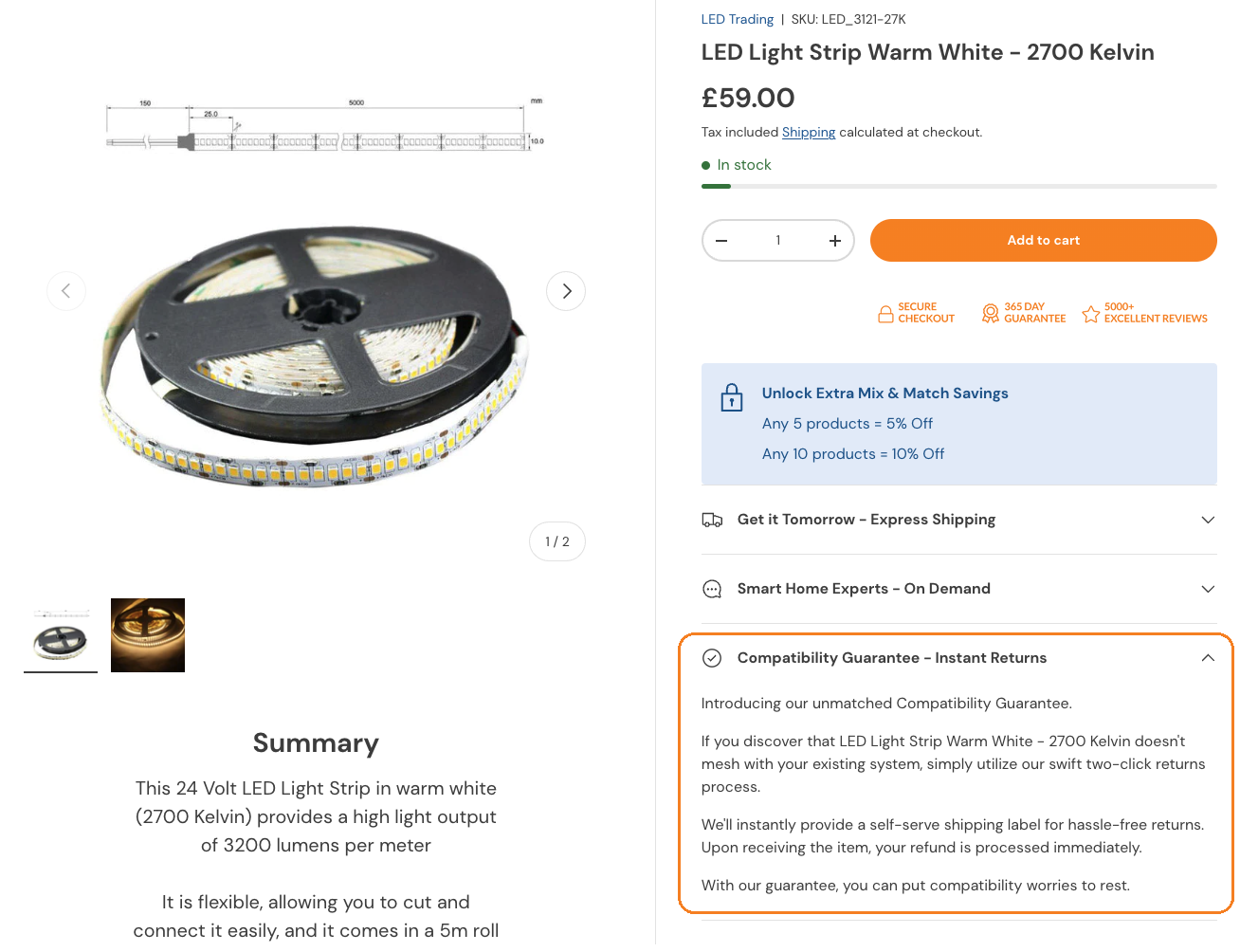
Getting Help and Advice
Hopefully this guide has helped you to understand Smart Home Compatibility and the best course of action to take when choosing Smart Home systems and devices. If you need any further help or advice, contact Vesternet and we will do our best to answer all of your questions.



















